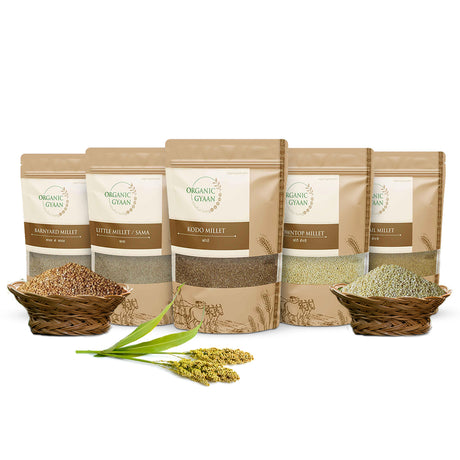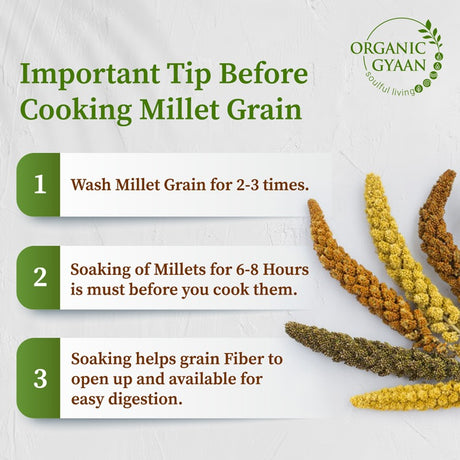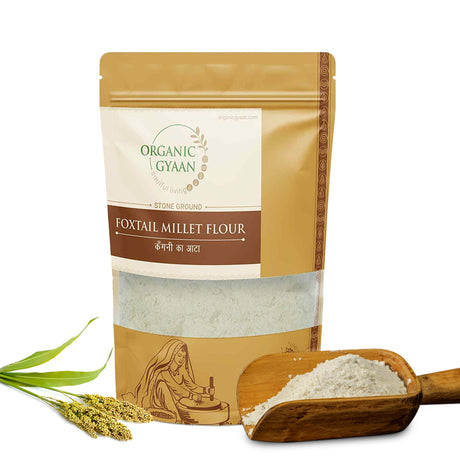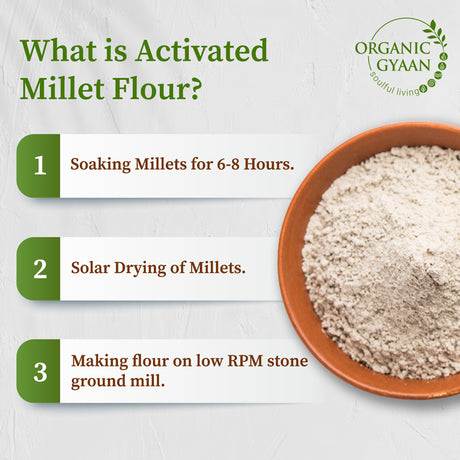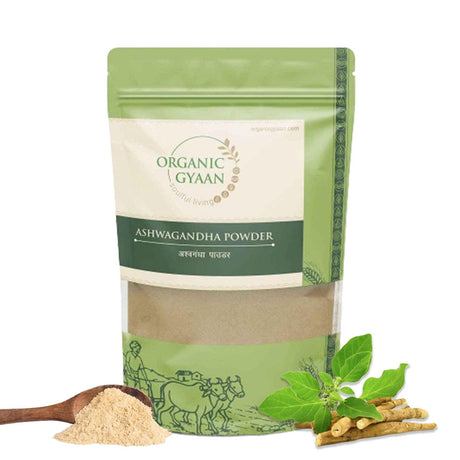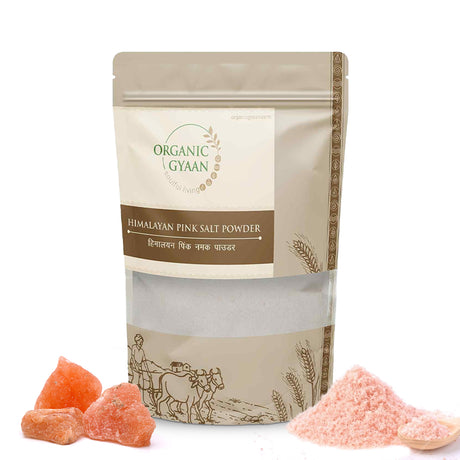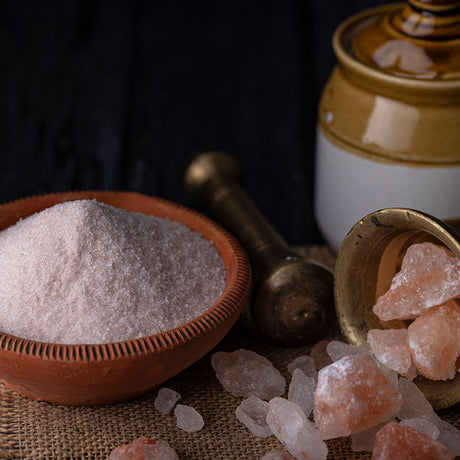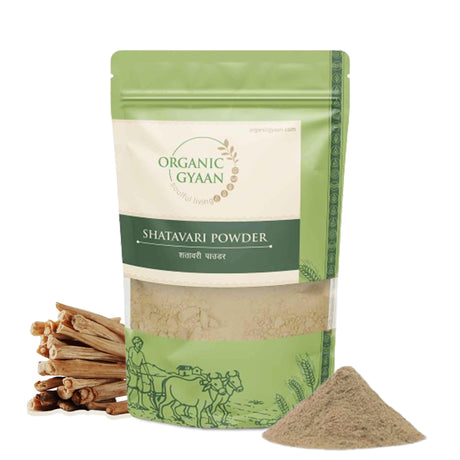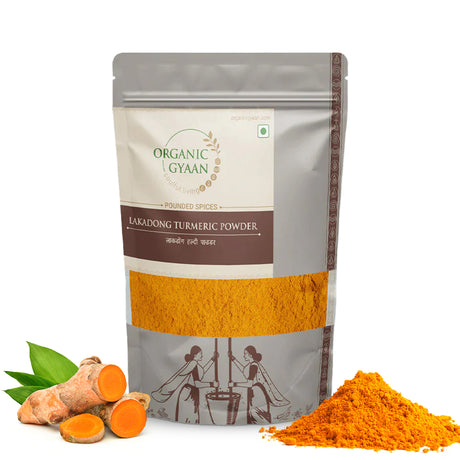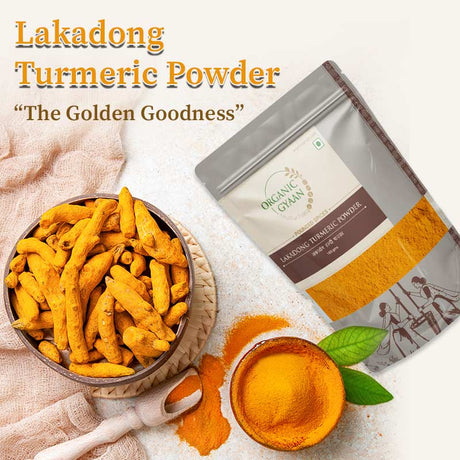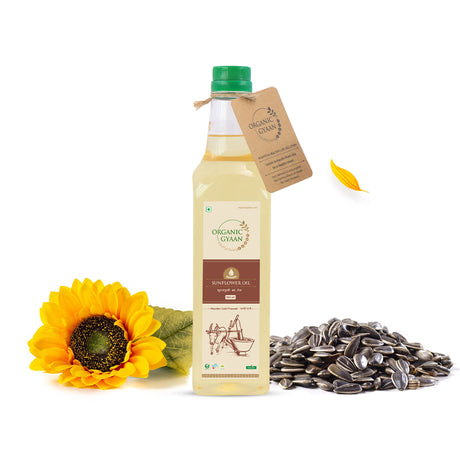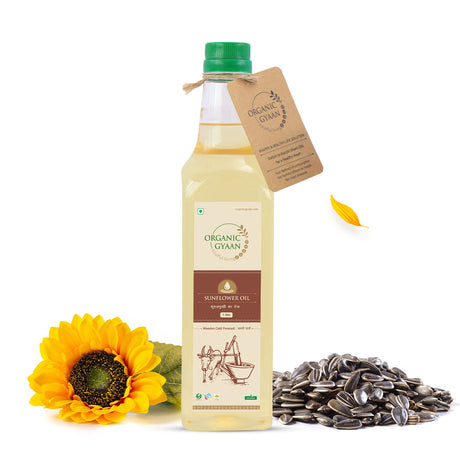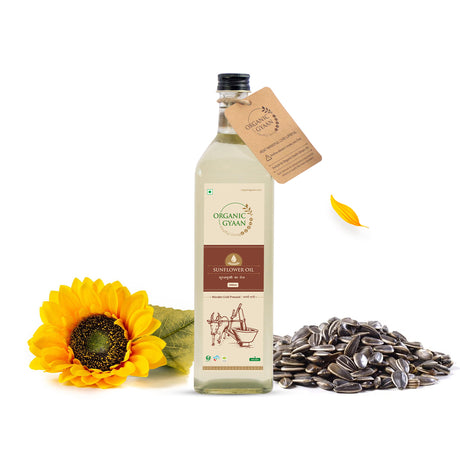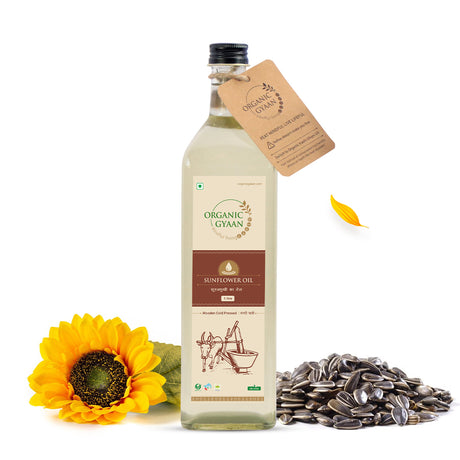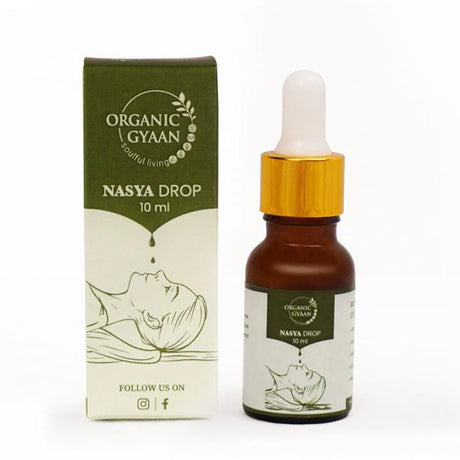तुम्हाला माहित आहे का की अनेक भारतीय स्वयंपाकघरांमध्ये वापरला जाणारा रवा, केवळ उपमा आणि हलवा सारखे स्वादिष्ट पदार्थ बनवण्यासाठीच वापरला जात नाही तर त्याचे अनेक आरोग्यदायी फायदे देखील आहेत? पण रवा म्हणजे नेमके काय? रवा हा पारंपारिकपणे डुरम गव्हापासून बनवलेला एक जाड पीठ आहे, ज्यामध्ये प्रथिने आणि ग्लूटेनचे प्रमाण जास्त असते. तथापि, रवा विविध प्रकारच्या बाजरीपासून देखील बनवता येतो, जसे की रागी, बाजरी आणि ज्वारी, ज्यामुळे आणखी पौष्टिक फायदे मिळतात.
या ब्लॉगमध्ये, आपण रवा म्हणजे काय, त्याचे पौष्टिक मूल्य, गहू आणि बाजरीच्या रव्याचे फायदे आणि तुम्ही ते तुमच्या स्वयंपाकात कसे वापरू शकता हे जाणून घेऊ. तुम्हाला रव्याची आधीच माहिती असेल किंवा तुम्ही ते नुकतेच शोधत असाल, तरी या वेगवेगळ्या प्रकारच्या रव्या तुमच्या आहारात आरोग्यदायी भर कशी घालू शकतात ते जाणून घ्या.
रव्याचे प्रकार
जेव्हा आपण रव्याबद्दल बोलतो तेव्हा बहुतेक लोक गव्हाच्या रव्याचा विचार करतात, जो सर्वात सामान्य प्रकार आहे. तथापि, रवा वेगवेगळ्या धान्यांपासून बनवता येतो, प्रत्येक धान्याचे वेगळे स्वाद आणि आरोग्य फायदे असतात. रव्याचे काही लोकप्रिय प्रकार येथे आहेत:
१. गव्हाचा रवा :
हा रव्याचा सर्वात जास्त वापरला जाणारा प्रकार आहे, जो डुरम गव्हापासून बनवला जातो. त्यात प्रथिने आणि ग्लूटेनचे प्रमाण जास्त असते, ज्यामुळे ते पास्ता, ब्रेड आणि उपमा आणि हलवा सारखे विविध भारतीय पदार्थ बनवण्यासाठी आदर्श बनते. गव्हाचा रवा त्याच्या खरखरीत पोत आणि समृद्ध चवीसाठी ओळखला जातो, ज्यामुळे तो अनेक पाककृतींमध्ये एक बहुमुखी घटक बनतो.
२. तांदळाचा रवा :
तांदळापासून बनवलेला, या प्रकारचा रवा बहुतेकदा दक्षिण भारतीय पाककृतींमध्ये इडली आणि डोसा सारखे पदार्थ बनवण्यासाठी वापरला जातो. तो नैसर्गिकरित्या ग्लूटेन-मुक्त आहे, ज्यामुळे ग्लूटेन असहिष्णुता किंवा सेलिआक रोग असलेल्यांसाठी तो एक चांगला पर्याय बनतो. तांदळाचा रवा पोत गुळगुळीत असतो आणि त्याला सौम्य चव असते जी विविध घटकांसह चांगले मिसळते.
३. कॉर्न रवा:
कॉर्नमील म्हणूनही ओळखले जाणारे, या प्रकारचे रवा ग्राउंड कॉर्नपासून बनवले जाते. कॉर्नब्रेड, मफिन आणि टॉर्टिला बनवण्यासाठी ते सामान्यतः बेकिंग आणि स्वयंपाकात वापरले जाते. कॉर्न रव्याला थोडी गोड चव आणि खडबडीत पोत असते, ज्यामुळे पदार्थांमध्ये एक अनोखी चव आणि कुरकुरीतपणा येतो.
४. बाजरीचा रवा:
पारंपारिक रवा हा डुरम गव्हापासून बनवला जातो, तर वेगवेगळ्या प्रकारच्या बाजरीच्या दाण्यांपासून बनवलेले प्रकार देखील आहेत. बाजरीचा रवा त्याच्या अद्वितीय चवीमुळे आणि अतिरिक्त आरोग्य फायद्यांमुळे वाढत्या प्रमाणात लोकप्रिय होत आहे. रागी, बाजरी आणि ज्वारी सारख्या बाजरीमध्ये फायबर, जीवनसत्त्वे आणि खनिजे भरपूर प्रमाणात असतात आणि त्यात ग्लूटेन-मुक्त पर्याय असतात. बाजरी रव्याचे काही सामान्य प्रकार येथे आहेत:
- रागी रवा : रागी रवा कॅल्शियम आणि लोहाने समृद्ध असतो, ज्यामुळे तो हाडांच्या आरोग्यासाठी आणि अशक्तपणा रोखण्यासाठी उत्कृष्ट बनतो. त्यात उच्च फायबर सामग्री देखील असते, जी पचनास मदत करते आणि रक्तातील साखरेची पातळी नियंत्रित करण्यास मदत करते.
- बाजरी रवा : बाजरी रवा प्रथिने, फायबर आणि मॅग्नेशियम सारख्या पोषक तत्वांनी परिपूर्ण आहे. ते हृदयाच्या आरोग्यासाठी फायदेशीर आहे आणि कमी ग्लायसेमिक इंडेक्समुळे मधुमेहाचे व्यवस्थापन करण्यास मदत करू शकते.
- ज्वारी रवा : ज्वारी रवा ग्लूटेन-मुक्त आणि अँटीऑक्सिडंट्सने समृद्ध आहे, ज्यामुळे ग्लूटेन असहिष्णुता असलेल्या लोकांसाठी तो एक चांगला पर्याय बनतो. त्यात फायबर देखील जास्त असते, जे पचनक्रिया निरोगी ठेवण्यास मदत करते आणि वजन व्यवस्थापनात मदत करते.
- फॉक्सटेल बाजरी रवा : फॉक्सटेल बाजरी रवा हा प्रथिने आणि आहारातील फायबरचा चांगला स्रोत आहे. तो रक्तातील साखरेची पातळी निरोगी ठेवण्यास मदत करतो आणि एकूण आरोग्यास आधार देतो.
या प्रकारच्या बाजरीच्या रव्याचे अनेक आरोग्य फायदे आहेत आणि पारंपारिक रव्याप्रमाणेच ते विविध पाककृतींमध्ये वापरले जाऊ शकतात. ज्यांना पोषक तत्वांचे सेवन वाढवून काहीतरी नवीन करून पहायचे आहे त्यांच्यासाठी ते एक उत्तम पर्याय आहेत.
रव्याचे पोषण तथ्ये
रव्याचे फायदे समजून घेण्यासाठी, त्याच्या पौष्टिक मूल्याबद्दल जाणून घेणे उपयुक्त ठरेल. रव्याच्या पौष्टिक मूल्याचा एक झटपट आढावा येथे आहे, जो ते किती पोषक तत्वांनी समृद्ध आहे हे दर्शवितो:
|
पोषक घटक |
प्रति १०० ग्रॅम प्रमाण |
|
कॅलरीज |
३६० |
|
प्रथिने |
१२.७ ग्रॅम |
|
कार्बोहायड्रेट्स |
७२.८ ग्रॅम |
|
फायबर |
३.९ ग्रॅम |
|
जाड |
१.०५ ग्रॅम |
|
कॅल्शियम |
१७ मिग्रॅ |
|
लोखंड |
१.२३ मिग्रॅ |
|
मॅग्नेशियम |
४७ मिग्रॅ |
|
पोटॅशियम |
१८६ मिग्रॅ |
रवा हा प्रथिने आणि कार्बोहायड्रेट्सचा चांगला स्रोत आहे, ज्यामुळे तो ऊर्जा वाढवणारा एक उत्तम पदार्थ बनतो. त्यात चरबीचे प्रमाण देखील कमी असते आणि त्यात लोह आणि मॅग्नेशियम सारखे आवश्यक खनिजे असतात, जे चांगले आरोग्य राखण्यासाठी महत्वाचे असतात.
रव्याचे फायदे
आता आपल्याला रव्याच्या पोषण आणि बाजरीच्या रव्याच्या विविध प्रकारांची मूलभूत समज झाली आहे, चला रव्याचे विविध फायदे आणि तुम्ही ते तुमच्या आहारात का समाविष्ट करावे याचा शोध घेऊया.
१. प्रथिने समृद्ध
रव्याच्या सर्वात महत्त्वाच्या फायद्यांपैकी एक म्हणजे त्यात उच्च प्रथिने सामग्री. रव्याच्या पिठामध्ये प्रति १०० ग्रॅम सुमारे १२.७ ग्रॅम प्रथिने असतात, ज्यामुळे ते वनस्पती-आधारित प्रथिनांचा एक उत्कृष्ट स्रोत बनते. प्रथिने ऊतींच्या निर्मिती आणि दुरुस्तीसाठी, एंजाइम आणि हार्मोन्स तयार करण्यासाठी आणि एकूण वाढ आणि विकासास समर्थन देण्यासाठी आवश्यक आहेत.
तुमच्या आहारात रवा समाविष्ट केल्याने तुमच्या दैनंदिन प्रथिनांच्या गरजा पूर्ण होण्यास मदत होऊ शकते, विशेषतः जर तुम्ही शाकाहारी किंवा शाकाहारी असाल तर. हे तुमच्या जेवणात एक मौल्यवान भर असू शकते, स्नायूंचे वस्तुमान आणि एकूण आरोग्य राखण्यासाठी आवश्यक असलेल्या अमीनो आम्लांचे चांगले संतुलन प्रदान करते.
२. ऊर्जेचा चांगला स्रोत
गव्हाचा रवा हा कॉम्प्लेक्स कार्बोहायड्रेट्सचा एक उत्तम स्रोत आहे, जो दिवसभर उर्जेचा स्थिर स्रोत प्रदान करतो. साध्या कार्बोहायड्रेट्सच्या विपरीत, ज्यामुळे रक्तातील साखरेची पातळी झपाट्याने वाढते आणि कमी होते, रव्यातील कॉम्प्लेक्स कार्बोहायड्रेट्स हळूहळू पचतात, ज्यामुळे सतत ऊर्जा मिळते. रवा खाल्ल्याने तुम्हाला ऊर्जावान आणि सक्रिय राहण्यास मदत होते, ज्यामुळे ते नाश्त्यासाठी किंवा दुपारच्या जेवणासाठी एक आदर्श अन्न पर्याय बनते.
३. पचनक्रियेच्या आरोग्यास समर्थन देते
रव्याचा आणखी एक महत्त्वाचा फायदा म्हणजे त्यातील फायबरचे प्रमाण. रव्यामध्ये प्रति १०० ग्रॅम सुमारे ३.९ ग्रॅम फायबर असते, जे निरोगी पचनसंस्था राखण्यासाठी आवश्यक आहे. फायबर आतड्यांच्या हालचाली नियंत्रित करण्यास, बद्धकोष्ठता रोखण्यास आणि आतड्यांमध्ये फायदेशीर बॅक्टेरियाच्या वाढीस प्रोत्साहन देण्यास मदत करते. तुमच्या आहारात रव्याचा समावेश केल्याने पचनक्रिया निरोगी राहण्यास आणि आतड्यांचे एकूण कार्य सुधारण्यास मदत होते.
४. रक्तातील साखरेची पातळी नियंत्रित करण्यास मदत करते
रवा रक्तातील साखरेची पातळी नियंत्रित करण्यास देखील मदत करू शकतो, ज्यामुळे मधुमेह असलेल्या लोकांसाठी तो एक चांगला पर्याय बनतो. रव्याचा कमी ग्लायसेमिक इंडेक्स (GI) म्हणजे त्यामुळे रक्तातील साखरेची पातळी जलद वाढत नाही.
याव्यतिरिक्त, रव्यातील फायबर रक्तप्रवाहात साखरेचे शोषण कमी करते, ज्यामुळे रक्तातील साखरेमध्ये अचानक वाढ होण्यास प्रतिबंध होतो. संतुलित आहाराचा भाग म्हणून रवा खाल्ल्याने रक्तातील साखरेची पातळी नियंत्रित होण्यास मदत होते आणि उर्जेचा स्थिर स्रोत मिळतो.
५. लोह समृद्ध
रव्याचा एक कमी ज्ञात फायदा म्हणजे त्यातील लोहाचे प्रमाण. लाल रक्तपेशींच्या निर्मितीसाठी आणि संपूर्ण शरीरात ऑक्सिजन वाहून नेण्यासाठी लोह आवश्यक आहे. लोहाच्या कमतरतेमुळे अशक्तपणा होऊ शकतो, ज्यामुळे थकवा, अशक्तपणा आणि इतर आरोग्य समस्या उद्भवतात.
गव्हाच्या रव्यातून भरपूर प्रमाणात लोह मिळते, ज्यामुळे ते आहारात एक उत्तम भर पडते, विशेषतः ज्यांना लोहाची कमतरता जास्त असते, जसे की शाकाहारी, शाकाहारी किंवा बाळंतपणाच्या वयातील महिलांसाठी.
६. मॅग्नेशियम समृद्ध
रव्याच्या फायद्यांमध्ये त्याच्या समृद्ध खनिज घटकांचा समावेश आहे. रवा हा मॅग्नेशियमचा एक चांगला स्रोत आहे, जो स्नायूंच्या कार्यात, मज्जातंतूंच्या कार्यात आणि हाडांच्या आरोग्यात महत्त्वाची भूमिका बजावतो. शरीरातील शेकडो जैवरासायनिक अभिक्रियांसाठी मॅग्नेशियम आवश्यक आहे, ज्यामध्ये प्रथिने संश्लेषण, स्नायू आणि मज्जातंतूंचे कार्य आणि रक्तातील साखर नियंत्रण यांचा समावेश आहे. तुमच्या आहारात रव्याचा समावेश केल्याने तुम्हाला हे महत्त्वाचे खनिजे मिळतील आणि तुमच्या एकूण आरोग्याला आधार मिळेल.
७. कमी चरबीयुक्त
रव्याचा एक फायदा म्हणजे त्यात चरबीचे प्रमाण कमी असते, ज्यामुळे वजन नियंत्रित करू इच्छिणाऱ्या किंवा चरबीचे सेवन कमी करू इच्छिणाऱ्यांसाठी ते एक आरोग्यदायी पर्याय बनते. रव्यामध्ये प्रति १०० ग्रॅम फक्त १.०५ ग्रॅम चरबी असते, ज्यामुळे कमी चरबीयुक्त आहार घेणाऱ्यांसाठी ते एक उत्तम पर्याय बनते. तुमच्या जेवणात रव्याचा समावेश केल्याने तुम्हाला जास्त चरबीच्या सेवनाची चिंता न करता स्वादिष्ट पदार्थांचा आनंद घेता येतो.
८. बहुमुखी आणि वापरण्यास सोपा
रव्याचे असंख्य उपयोग आहेत, ज्यामुळे ते स्वयंपाकघरात एक बहुमुखी घटक बनते. उपमा सारख्या चविष्ट नाश्त्यापासून ते हलव्यासारख्या गोड मिष्टान्नांपर्यंत विविध प्रकारचे पदार्थ बनवण्यासाठी याचा वापर केला जाऊ शकतो.
रव्याचे पीठ बेकिंगमध्ये देखील वापरले जाते, ज्यामुळे ते ब्रेड, केक आणि कुकीजसाठी एक उत्तम पर्याय बनते. तुमच्या स्वयंपाकात रवा वापरल्याने तुम्हाला संपूर्ण कुटुंबाला आवडतील अशा विविध प्रकारच्या स्वादिष्ट आणि पौष्टिक पदार्थांची विस्तृत श्रेणी तयार करण्यास मदत होऊ शकते.
तुमच्या आहारात रवा कसा वापरावा
आता तुम्हाला रव्याचे फायदे माहित आहेत, तर तुमच्या दैनंदिन आहारात रव्याचा समावेश करण्याचे काही सोपे मार्ग येथे आहेत:
- नाश्ता : तुमच्या दिवसाची सुरुवात रव्याच्या लापशी किंवा उपमाने करा. हे पदार्थ केवळ स्वादिष्टच नाहीत तर सकाळभर तुम्हाला उत्साही ठेवण्यासाठी चांगली ऊर्जा देखील देतात.
- बेकिंग : ब्रेड, केक आणि कुकीज बनवण्यासाठी बेकिंगमध्ये रव्याचे पीठ वापरा. ते बेक्ड पदार्थांना एक अद्वितीय पोत आणि चव देते.
- मिष्टान्न : रव्याचा वापर करून हलवा किंवा केसरीसारखे पारंपारिक भारतीय मिष्टान्न बनवा. या मिठाई बनवायला सोप्या आहेत आणि रव्याचे फायदे अनुभवण्याचा हा एक उत्तम मार्ग आहे.
- पास्ता आणि नूडल्स : घरी बनवलेला पास्ता किंवा नूडल्स बनवण्यासाठी गव्हाचा रवा वापरा. ते एक चघळणारा पोत आणि समृद्ध चव देते जे दुकानातून विकत घेतलेल्या पास्ताशी जुळत नाही.
- लेप : कटलेट्स आणि फ्रिटरसारख्या तळलेल्या पदार्थांसाठी रव्याचा लेप वापरा. ते कुरकुरीत पोत देते आणि तुमच्या पदार्थांमध्ये एक स्वादिष्ट कुरकुरीतपणा आणते.
निष्कर्ष
रव्याचे अनेक फायदे आहेत, ज्यामुळे ते कोणत्याही आहारात एक मौल्यवान भर घालते. प्रथिने आणि फायबर पुरवण्यापासून ते पचनक्रिया सुधारण्यापर्यंत आणि रक्तातील साखरेची पातळी नियंत्रित करण्यापर्यंत, रवा तुमच्या एकूण आरोग्यासाठी अनेक फायदे देतो जे तुमचे एकूण आरोग्य सुधारू शकतात. तुम्ही पारंपारिक भारतीय पदार्थांमध्ये ते वापरत असलात किंवा बेकिंगमध्ये वापरत असलात तरी, रवा हा एक बहुमुखी आणि पौष्टिक घटक आहे जो तुमचे आरोग्य ध्येय साध्य करण्यास मदत करू शकतो.
रव्याचे आरोग्यदायी फायदे अनुभवण्यास तयार आहात का? आजच तुमच्या दैनंदिन आहारात हा बहुमुखी आणि पौष्टिक घटक समाविष्ट करायला सुरुवात करा आणि ते तुमचे आरोग्य कसे सुधारू शकते ते पहा. तुम्ही रव्याचा वापर त्याच्या प्रथिनांच्या प्रमाणासाठी करत असाल किंवा पचनक्रिया सुधारण्यासाठी करत असाल, प्रत्येक स्वयंपाकघरात या घटकासाठी जागा आहे.


